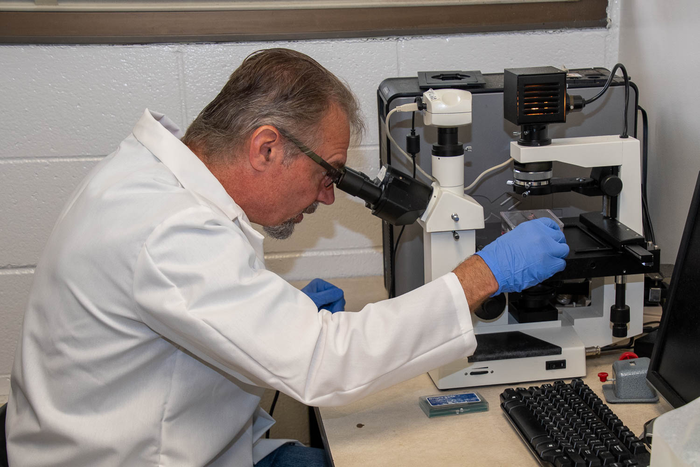
Lead Image: Scientists at Clemson University are making progress in understanding the link between specific enzymes that are naturally generated in the body and their involvement in managing obesity and controlling liver diseases.
Scientists are investigating the connections between obesity, age, and body chemistry.
Obesity is described as an abnormal or excessive buildup of fat that poses a health concern. This condition has grown to become widespread across the United States. According to statistics gathered by the Centers for Disease Control and Prevention (CDC) in 2017-18, more than 42 percent of U.S. adults and 19 percent of U.S. youths are obese.
Unfortunately, obesity rates in adults and children continue to rise. From 1975 to 2016, the worldwide prevalence of overweight or obese children and adolescents aged 5–19 years grew more than fourfold, from 4% to 18%. Obesity is generally thought to be caused by eating too much and moving too little, however recent studies suggest other factors may be in play.
A Clemson University research team is making strides in understanding the link between certain enzymes naturally generated in the body and their role in managing obesity and controlling liver diseases.
Three Clemson researchers and Emory University School of Medicine colleagues analyzed male mice lacking the Cyp2b enzyme and how the enzyme’s absence impacted the mice’s metabolism.
According to William Baldwin, a professor and graduate program supervisor at Clemson’s Department of Biological Sciences, the study was prompted in part by a simple observation: male mice without the Cyp2b enzyme were gaining weight. Female Cyp2b-null mice did not show the same effect.
“We noticed that our Cyp2b-null mice were heavier,” said Baldwin, a professor in the department of biological sciences. “They are more prone to obesity — at least, diet-induced obesity — especially in males than are wild-type mice, and we were trying to find out why that is.”
While the observation that tipped off the researchers was pretty straightforward, it turned out that understanding the interactions behind the weight gain would be much more complex.
“It would be nice if there was a nice, simple answer,” Baldwin said, “but there probably isn’t a nice, simple answer.”

Variety of roles
Baldwin noted the complexities of several chemical processes involving the CYP enzyme, which is part of an enzyme superfamily that performs a number of functions in humans. According to him, the Cyp2b enzymes assist in the metabolization of certain toxins and drugs in order to remove them from the body.
But those same CYP enzymes have other jobs, as well. “They metabolize bile acids; they metabolize steroid hormones; they metabolize polyunsaturated fats from our diet,” Baldwin said. “This means that all these things can interact, too. If you have a diet that’s full of fat, that might inhibit your drug metabolism. Of course … drugs might inhibit your fat metabolism, might affect your steroid metabolism, and so on.”
The researchers also looked at the association between “perturbed lipid profiles” and disease.
Disease susceptibility and overall health is greatly affected by changes to the lipidome, the researchers noted. High-fat diets, such as the Western diet, cause obesity and drastically alter the hepatic lipidome, and perturbed lipid profiles are associated with specific liver diseases, such as nonalcoholic fatty liver disease (NAFLD) and nonalcoholic steatohepatitis (NASH).
Impact of age and diet
Baldwin has previously led research examining the link between diet and environmental toxins. The most recent study looked at how aging and diet affect these metabolic processes.
“What does a poor diet do to us? What does age do to us? That’s kind of the idea here,” Baldwin said of the latest research. “We’re looking at these enzymes; what might happen over time to our profiles in this mouse model compared to just a wild-type mouse. What might happen over time with a high-fat diet, what might happen as we age, and how does it differ between this one mouse model, which doesn’t have these enzymes, compared to one that does have these enzymes.”
Simply put, Baldwin said, “One of the things that we saw, and not surprisingly, is that getting older is bad. It’s tougher for the mice to regulate body weight. They gain weight. The weight that they have is more white adipose tissue [connective tissue mainly comprising fat cells]. … And some of these things were a little bit worse in the mice that lacked the Cyp2b enzymes. They were a little bit heavier. They had a little more fat than their counterparts. Their livers were a little bit bigger and a little bit less healthy. So they had a lot of those things that we associate with age going on.”
Diet also had an impact on the mice’s health.
“Of course, diet didn’t help, as well,” Baldwin continued. “It’s the same case: Eating a poor diet caused weight gain, and it was a little worse with these [Cyp2b-null] mice, probably because of poor metabolism.”
He said the exact mechanism by which the Cyp2b enzyme works is not completely understood.
“You take away an enzyme that helps metabolize these, but I don’t think it is really important that it helps get rid of the fat, but that it lets the body know the fat is there. It probably produces signaling molecules that say ‘Hey, we need to decide what we’re going to do with this fat; we need to distribute this fat.’ That kind of information. That’s just an educated guess at this time, but I think that’s probably what’s happening.”
Differences in humans
Baldwin said his current research takes a closer look at the mechanisms that are in play and how they differ in a human model from the mouse studies.
He said the research, which will be a part of an as-yet-unpublished paper, indicates that the mouse and the human enzymes probably don’t work the same. “The human enzyme seems to cause us to keep some of the fat in the liver, and the mouse enzyme seems to drive that to the white adipose tissue. There are hints here in this paper that that’s the case,” Baldwin said.
A National Institutes of Health grant supported the research.
Reference: “Age- and Diet-Dependent Changes in Hepatic Lipidomic Profiles of Phospholipids in Male Mice: Age Acceleration in Cyp2b-Null Mice” by Melissa M. Heintz, Ramiya Kumar, Kristal M. Maner-Smith, Eric A. Ortlund and William S. Baldwin, 29 March 2022, Journal of Lipids.
DOI: 10.1155/2022/7122738




